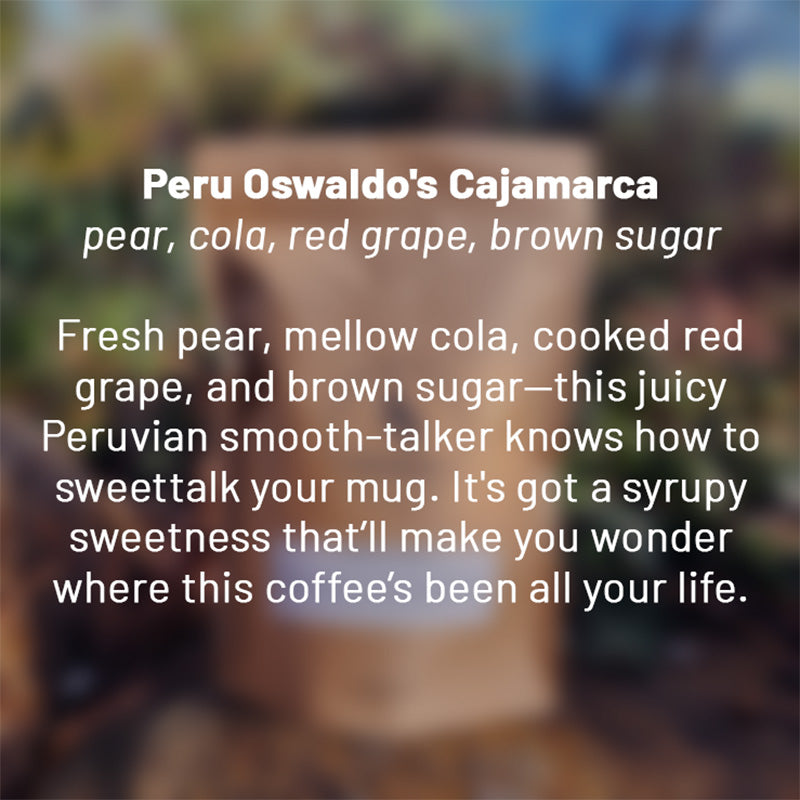Peru Oswaldo's Cajamarca roasted coffee beans *ALMOST GONE*
Peru Oswaldo's Cajamarca roasted coffee beans *ALMOST GONE*
pear, cola, cooked red grape, brown sugar
Fresh pear, mellow cola, cooked red grape, and brown sugar—this juicy Peruvian smooth-talker knows how to sweettalk your mug. It's got a syrupy sweetness that’ll make you wonder where this coffee’s been all your life.
THE FARM: Finca El Cedro
Nestled in the Huabal district of Peru's Cajamarca region, Finca El Cedro is the brainchild of Oswaldo González. This area is basically a coffee paradise, thanks to its high altitudes and sweet microclimates – perfect for growing top-notch specialty beans.
Oswaldo's farm sits pretty at around 1,850 meters above sea level, giving his Caturra and Bourbon varieties the VIP treatment they deserve. He's a stickler for detail, making sure only the ripest cherries are handpicked during harvest. This meticulous approach is what gives the coffee its super clean and vibrant flavour profile. Oswaldo’s all about quality and sustainable farming, which has made Finca El Cedro a big deal in Huabal and him a leader in his community.
THE REGION: Cajamarca
Cajamarca is like the cool, high-altitude cousin of Peruvian coffee regions. It's got this unique combo of semi-dry, semi-cold, tropical highlands and incredibly fertile soil that makes it prime real estate for specialty coffee. Small-time farmers, usually with 2-3 hectares, are leading the charge, with many embracing organic farming. While most farmers here used to go solo, the rise of cooperatives has been a game-changer, really boosting the quality of coffees coming out of the area.
THE COUNTRY: Peru
Coffee decided to swing by Peru way back in the mid-1700s, but it didn't really hit the commercial export scene until the 20th century. Blame Europe’s sudden coffee craving (Indonesia’s coffee supply took a bit of a dive). The Brits lent a hand, driving up exports, and by the early 1900s, they even owned a hefty chunk of Peruvian land, turning much of it into coffee plantations.
Fast forward through the 20th century, and those big European landholdings broke up, giving farmers independence but also cutting them off from bigger markets and resources. Unlike some other coffee-producing nations, Peru's smallholders lacked the big-picture support, a gap that various certifications and organizations have been working to fill. That’s why Peru boasts an impressive number of certified-organic, Fair Trade, Rainforest Alliance, and UTZ-certified coffees. About 30% of Peru’s smallholders are part of democratic co-ops, which has put their coffees on the map, even if it hasn't always highlighted the truly exceptional microlots.
As of the 2010s, Peru is a major player, often ranking among the top five global producers and exporters of Arabica coffee. The remote farms and tiny average farm sizes have historically made it tough for individual farms to stand out, unlike in other regions. But guess what? That’s changing! Peru’s lush highlands and fantastic heirloom varieties are setting the stage for growers to overcome past challenges, and as production grows, expect to see more and more incredible Peruvian coffees making waves.


